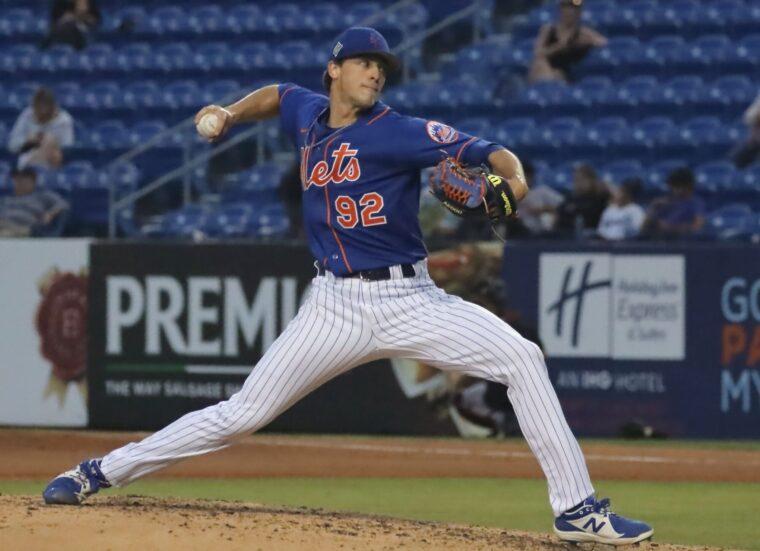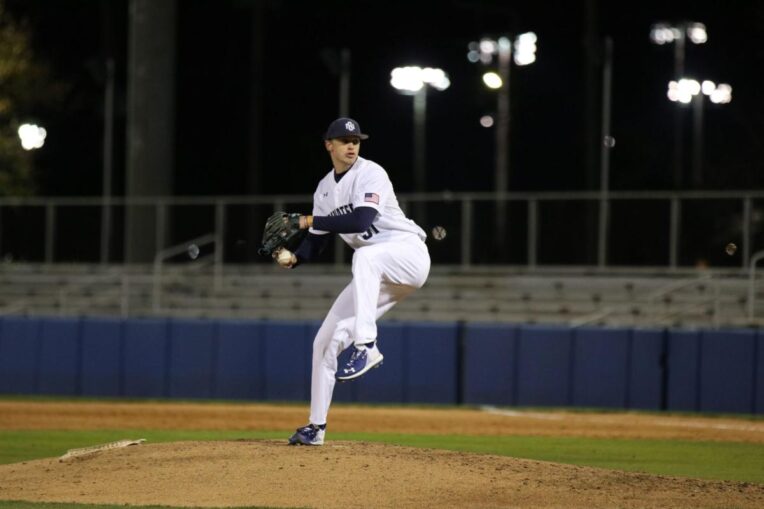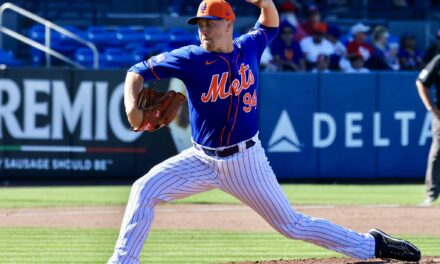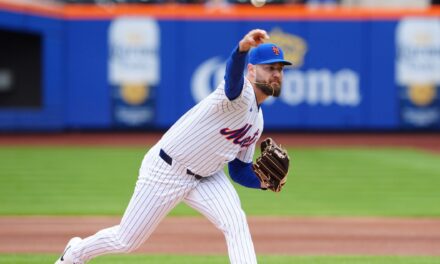
Eric Orze. Photo by Ed Delany of MMO
Eric Orze has battled adversity his whole career. From two bouts with cancer, to struggles in both 2022 and 2023 with Triple-A Syracuse, he hasn’t had a smooth road to the big leagues by any means.
Back in 2021, when he rocketed through the Mets’ minor league system, it looked as if he could have a meteoric rise to Queens, but he stalled in Triple-A and hasn’t gotten over the hump yet. His path resembles that of Ryley Gilliam who had a similar ascent in 2019 only to struggle in 2021 and then get hurt in spring training 2022.
Grant Hartwig is another Mets’ reliever who pitched at multiple levels in one season, but he managed to make it to the majors this season thanks to more velocity and a wider array of pitches limiting his home runs against. Orze has turned a corner recently, however, begging the question as to whether he deserves a look in the big apple in the last few series of the season.
Orze has had high strikeout rates in each of his three seasons in Syracuse (32%, 32.5%, and 29.4% in 2021, 2022, and 2023, respectively) and has put up eight-straight scoreless outings (14 IP, 2 H, 0 R, 6 BB, 22 SO) lowering his ERA by 117 points. While he had been a command artist in past years, his walk rate has risen 8.5% this year from 6.6% to 15.1%, likely leading to his inconsistencies despite a drastically reduced home run rate.
While Orze does have solid offerings in his pitch arsenal, he lacks the complete picture like fellow up-and-comer Grant Hartwig. Orze’s best pitch is his splitter, followed by his fastball with below average velocity and above-average vertical break. His splitter is his primary pitch at 45% usage and just, on average, 1″ of induced vertical break.
His four-seam fastball averages over 93 and has been up to 96 but that is a bit below the average of 95 in MLB from right-handed relievers. He does boast nearly 18″ of induced vertical break on the pitch though, significantly above average carry. His fastball shape resembles that of Drew Smith.
His third pitch is his slider thrown 21% of the time which needs the most work and will be a limiting factor until he improves the shape on it or adds velocity. At 84 mph, 0″ VB (vertical break) and -4″ HB (horizontal break), the shape is almost a gyro-slider but isn’t maximizing velocity given the shape. The Dodgers teach many of the pitchers in their organizations this version of slider but typically their iterations have less glove-side movement and often less depth on the pitch too, allowing for more velocity.

Eric Orze. Photo by Ed Delany of MMO
If Orze is able to add velocity to the slider, he would have a better weapon to right-handed hitters. Another plus for that version of slider is that it’s easy to command and if Orze is to succeed in the major leagues, he’ll need to keep his lower HR rate against (5% in 2022 vs. 2% in 2023) and need to get back to his former elite levels of command.
His splitter command is well above average, his slider command is around average, and his fastball is below average. Both the fastball and slider command have taken steps back in the last season, and the slider shape has varied from a slurvy shape to a mini-sweeper throughout the season. As seen by his walks and ERA, it’s no mystery that this season has been a rollercoaster affair for Orze. What are of interest, however, are the adjustments he’s made in recent weeks to turn the corner and gain momentum.
Orze has really leaned into his strengths recently, zapping slider usage and increasing the number of splitters per outing. In his last seven outings, he’s upped his splitter usage to a staggering 65%. This statistic is encouraging for a number of reasons including its higher in-zone rate and steady swing-and-miss rates even with higher usage.
He’s now throwing the slider at just 14% and its velocity is up to an average of 85.6 mph. He’s throwing harder than he has all season too, averaging over 94 on the heater, touching 96 for the first time in this span. While he does have six walks over these last eight outings, he is striking batters out at an absurd rate (22 over 14 innings).
Despite falling out of the top-30 prospect ranks, Orze still remains intriguing due to a well above average primary pitch. If he can maintain his current fastball velocity, stay in the zone, and continue improving his slider, there’s no reason to believe he couldn’t be successful in the big leagues. In fact, he could be more than just an “emergency” or “Quadruple-A” pitcher due to the unique characteristics of his splitter. Upping the splitter usage is an exciting development as Orze further defines his identity while he remains in prospect purgatory.















